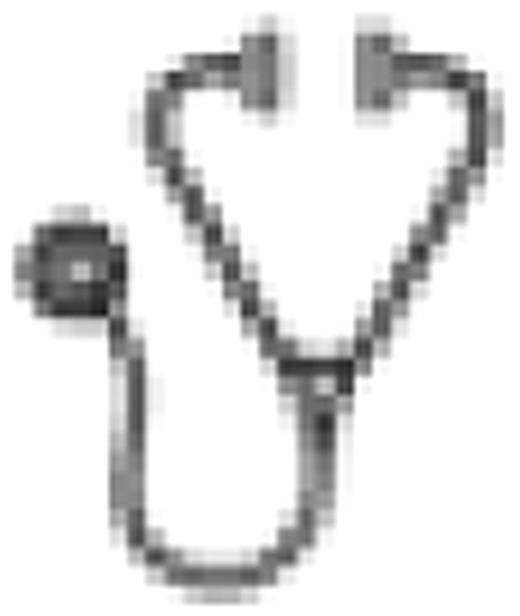Abstract
Abstract 69
Thrombocytopenia (TP) is a relatively common disorder in HIV-infected Persons, and may be a challenging illness to treat, mainly because of its multifactorial aetiology. The underlying pathophysiology includes accelerated immune-mediated peripheral PLT destruction and impaired PLT production by the infected megakaryocytes of the bone marrow. Moreover, TP can also occur as a secondary phenomenon in HIV-positive patients, due to hypersplenism, bone marrow infiltration from infections of lymphoma, or myelosuppressive effects of medications. However, the epidemiology and predictors of TP in the era of potent HIV antiretroviral therapy has not been well defined. In a recent retrospective-matched case–control study of HIV-infected adult outpatients with (n=73) and without (n=73) TP, authors found that TP was significantly associated with HCV infection, cirrhosis, and uncontrolled HIV replication (Marks KM et al. J AIDS 2009). Antiretroviral therapy interruption among patients with well-controlled HIV infection has been associated with an increased incidence of thrombocytopenia, especially among those with a low baseline platelet count or a history of HIV-related thrombocytopenia (Bouldouyre MA et al. J AIDS 2009).
The study was carried out in the Icona Foundation Study Cohort. All previously naïve starting cART with normal value of platelet count (PC) were included. TP has been defined as PC <100 × 109/L persisting in at least 2 consecutive determinations for at least 3 consecutive months. For each patient person-years of follow-up (PYFU) while receiving cART were calculated, and used to estimate the incidence rate of TP. A multivariable Poisson model was performed to elucidate the contribution of HIV viremia, immune reconstitution, HCV infection, ARV drug-class, and other potential risk factors for TP. Current HIV-RNA and CD4 count entered into the model as time-dependent covariates.
A total of 2,771 patients were included: 69.4% male, median age 36 yrs (IQR: 32–41), 38.5% HCV+. At initiation of cART, CD4 count and HIV-RNA were 295 cells/mmc and 4.75 log10 cp/mL, respectively. Mean value of baseline PC was 189 × 109/L (IQR 149–231). Overall patients contributed to 13,787 PYFU. During follow-up, 105 patients developed a TP accounting for an incidence rate of 7.6/1000 PYFU (95%CI 6.3–9.2). PC <20,000 was found in 5.7%, 20,000-50,000 in 12.4%, 50,000-100,000 in 81.4%. A trend for a reduction in the TP incidence rates over the last years was found (1997-1999: 9.8/1000 pyrs; 2000–2004: 4.6/1000 pyrs; 2005–2009: 4.5/1000 pyrs; P at Chi-square for temporal trend<0.001). At multivariable model, a higher risk of TP was associated with male gender (HR 1.99; 95%CI 1.19–3.32; P=0.008), and HCV co-infection (HR 3.45; 95%CI 2.23–5.33; P<0.001). Moreover, both lower level of current CD4 (HR 1.67 for 0–200 vs >350 cell/mmc; 95%CI 1.02–2.64; P=0.039) and detectable HIV viremia (HR 1.47 for each log10 cp/ml increase; 95%CI 1.25–1.73; P<0.001) were significantly associated with TP onset. No association with ARV drug-class was found.
Thrombocytopenia remains a relatively common disorder in the late HAART era, with an overall 7.6 * 1000 PYFU, even if a trend for a reduced incidence over the last years was observed. In a large unselected cohort of antiretroviral naïve starting treatment, HCV co-infection, cirrhosis at baseline, uncontrolled HIV replication and lower current CD4 count were all independent predictors of TP. Furthermore in our study, the association with HCV-infection was independent from cirrhosis suggesting that mechanisms other than advanced liver disease may play a role in HIV/HCV-coinfected patients. In this cohort of treated patients, we found a strong association of TP with uncontrolled HIV replication and lower current CD4, these findings confirm the benefit of antiretroviral therapy on HIV-related thrombocytopenia.
ON BEHALF OF THE ICONA FOUNDATION STUDY GROUP
No relevant conflicts of interest to declare.

This icon denotes an abstract that is clinically relevant.
Author notes
Asterisk with author names denotes non-ASH members.

This feature is available to Subscribers Only
Sign In or Create an Account Close Modal